Many teachers choose to start teacher blogs as a way to share their ideas and earn extra income.
While the niche can be competitive, there are still many opportunities for those who are motivated and have useful content.
If you’re a teacher or have teacher training, starting a teacher blog should be a side hustle contender.
Reader to learn more about this lucrative niche and to get inspiration from teacher blogs that are crushing it.
- The Best Teacher Blogs (Examples)
- What Is a Teacher Blog?
- What Is Included on a Teacher Blog?
- Types of Teacher Blogs
- Do Teacher Blogs Make Money?
- Products to Promote and Sell on a Teacher Blog
- Best Teacher Blogs: 25 Examples
- How to Become a Teacher Blogger
- Similar Blogging Types to Check Out
- Frequently Asked Questions
- Wrapping Up
The Best Teacher Blogs (Examples)
We’ve included an overview of our top picks below. For detailed information on each pick, scroll down.
Teacher Blogs for New Teachers
Teacher Blogs for Parents
Teacher Blogs for Inspiration
Teacher Blogs for Supplies
Teacher Blogs for Crafts & Lesson Plans
What Is a Teacher Blog?
A teacher blog is a website run by a teacher and is usually created for teachers or parents.
Its content may include blog posts, videos, images, and downloads.
Teacher blogs are often inspirational for other teachers and may also contain practical information for teachers and parents.
What Does a Teacher Blogger Blog About?
Teacher bloggers often share tips and anecdotes to help other teachers improve their own classroom experiences.
Blogs may include lesson plans, ideas for projects, and explanations of important topics.
Some teachers use their blogs to market lesson plans and worksheets that are sold either on their websites or an external site.
What Is Included on a Teacher Blog?
Below are some of the most common things you may find on a teacher blog.
1. Lesson Ideas
Teachers work long hours and don’t always have time to reinvent the wheel regarding lesson planning.
Many teachers turn to teacher bloggers for creative ideas for lesson plans.
Teachers who have unique ideas for lessons can get quite popular.
Some blogs feature detailed lesson plans, while others have more of an overview.
2. Teacher Tips
Whether you’ve only been teaching for a couple of years or if you’ve been doing it for decades, you probably have good advice to share.
Teachers often go online looking for advice.
You can share insight into how to teach a particularly challenging problem.
Classroom management tips are always popular too.
3. Project Ideas
There are a lot of crafty and creative teachers who have good ideas for projects.
If you’ve done some fun crafts, science experiments, or projects with your class, you can give directions to other teachers to try your idea.
4. Downloads
Many teachers create downloads like worksheets, posters, and lesson plans.
They often share these downloads on their teacher blogs.
You can also provide detailed instructions for using the worksheets.
Some teachers offer downloads for free to get traffic or get readers to sign up for their newsletters.
5. Product Recommendations
Most teachers work on a tight budget when it comes to spending for their classrooms.
They have to be discerning about how they spend their money.
When teachers find a great product, they love to share it with others.
Product recommendations may include school supplies, books, technology programs, and more.
Other Things That You Can Find on a Teacher Blog
There are a few more things that you can find on many teacher blogs.
1. Anecdotes / Inspiration
Some teacher bloggers will share anecdotes of things that happened in their classrooms.
These stories can give advice or maybe uplifting or funny.
As teachers can often suffer from burnout, some bloggers share inspirational posts to reassure other teachers and keep them moving forward.
2. Lists
Lists are a feature of many blogs because readers like something quick and easy to digest.
Teacher blogs feature all sorts of lists.
Some are products, such as a list of best books for a particular grade.
List posts may also feature various crafts or lessons around a certain theme, such as fall activities.
3. Pictures
Pictures are an important part of any blog.
If you can include photos from your classroom, your blog will feel more authentic than if you use stock photos.
While you can’t use pictures of your student’s faces, you can include images of them doing activities and steps of a project.
4. Videos
Video is growing on almost every type of blog.
Many teachers have a corresponding YouTube or TikTok channel.
However, even if you don’t create your own videos, you can still link to other relevant videos on your posts.
It can help increase the time people spend on your site.
Types of Teacher Blogs
There are many types of teacher blogs.
Below are a few of the most common.
- Teacher Blogs for New Teachers: Teacher blogs for new teachers offer advice tips and to help teachers adjust to life in the classroom. These blogs often include a lot of practical tips that teachers have learned from years of experience.
- Teacher Blogs for Inspiration: Inspirational teacher blogs offer wit and wisdom for teachers who may be experiencing burnout. These blogs may include quotes, stories, and other uplifting content.
- Teacher Blogs for Parents: Teacher blogs for parents may be written by teachers, parents, or homeschooling parents. These blogs give parents insight into what is going on in the classroom and can help parents work with their kids at home.
- Teacher Blogs for Supplies: Teachers are always looking for the best supplies at the best prices. These blogs test and recommend different supplies.
- Teacher Blogs for Crafts & Lesson Plans: Craft and lesson plan blogs make up a large portion of the teacher blog niche. Teachers share their best ideas and usually give step-by-step details.
Do Teacher Blogs Make Money?
Teacher blogs are one of the many different types of blogs that make money.
How Do Teacher Blogs Make Money?
There are many ways for teacher blogs to earn money.
Once your blog gets enough traffic, you can run ads.
You can recommend products with affiliate links to earn a commission.
You may create your own products, like lesson plans or worksheets, to sell on your site or through a third-party site.
You can create and promote YouTube videos on your blog.
If you have in-depth knowledge of a topic, you can create a course for other teachers or students.
You can also gate parts of your website and require users to pay to access them.
How Much Do Teacher Blogs Make?
Teacher bloggers can make good money by diversifying their income streams using some of the methods discussed above.
While the niche is competitive, if you can share unique ideas, like new lesson plans or projects, you can stand out.
As with most niches, there are a few teacher bloggers that do exceptionally well, even making it into the six figures monthly.
Some make a modest income.
Products to Promote and Sell on a Teacher Blog
You can promote products like supplies, classroom furniture, materials, and books on your blog.
You can even promote common teacher-related ClickBank products like online courses and books.
If you find digital products like worksheets that other teachers may like, you can promote those if the creator has an affiliate program.
You can also create your own digital products to sell.
Worksheets, lesson plans, and even books do well as digital downloads.
As your blog grows, you may be able to sell physical products.
You can create useful items like teacher planners and sell them.
You can even sell online courses.
An online course platform comparison can help you choose the best one.
Best Teacher Blogs: 25 Examples
Below are some of the best and most successful teacher blogs online.
We’ll go over why they perform so well.
Use these blogs as inspiration as you prepare to plan your blog.
How Many Teacher Blogs Are There?
While it’s difficult to know exactly how many teacher blogs there are online, the number is likely pretty high, in the tens of thousands, if not more.
One database discovered over 30,000 teacher blogs on one blog host alone.
Teacher Blogs for New Teachers
These five blogs contain some of the best resources and advice for those who are new to the teaching profession.
Proud to Be Primary
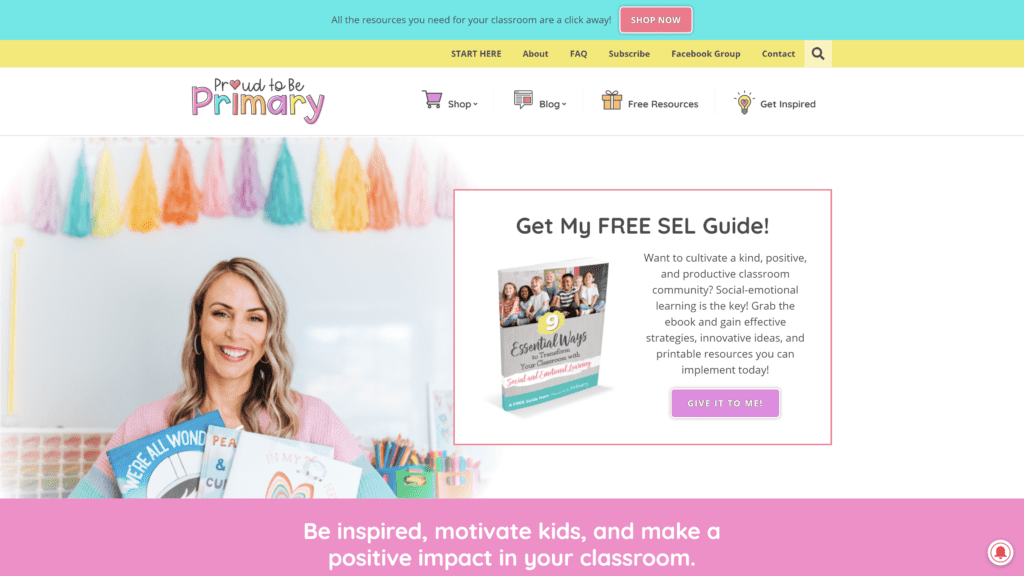
Proud to Be Primary is a great blog for new elementary teachers.
There are many great tips for classroom management and social-emotional learning, along with lesson plans.
Teacher blogger Elyse has several income streams, including a store, affiliate marketing, and a Teachers Pay Teachers shop.
She engages users by offering freebies in return for emails and hosts a teaching community on Facebook.
Cult of Pedagogy
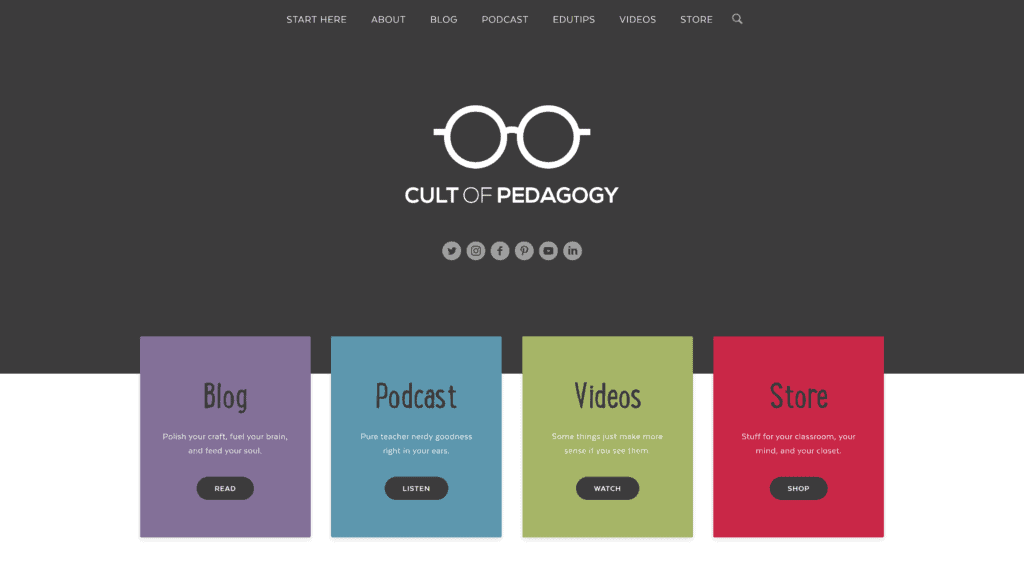
Jennifer Gonzalez’s blog Cult of Pedagogy is one of the most popular teacher blogs on the internet.
It offers helpful content for new and experienced teachers alike.
Everything is written in a fresh, witty voice.
The blog has a store that sells digital products, including guides, blogs, courses, and even merchandise.
The blog also promotes a corresponding podcast.
Jennifer makes affiliate income by recommending other courses.
Differentiated Teaching
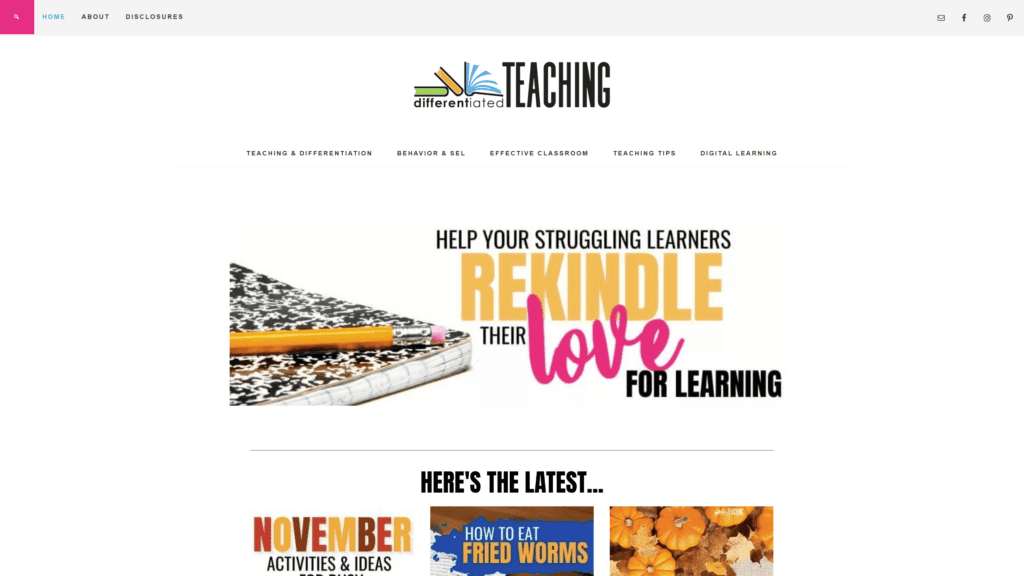
Differentiated Teaching’s main focus is on helping teachers reach all types of learners.
Rebecca, the teacher blogger, has a background in special education.
The blog has lesson plans, classroom and behavior ideas, and more.
It has everything a first-year teacher needs.
Rebecca monetizes her blog through Mediavine ads.
She sells digital products through her site’s store and on Teachers Pay Teachers.
She also has affiliate links for teacher products.
Teacher Off Duty
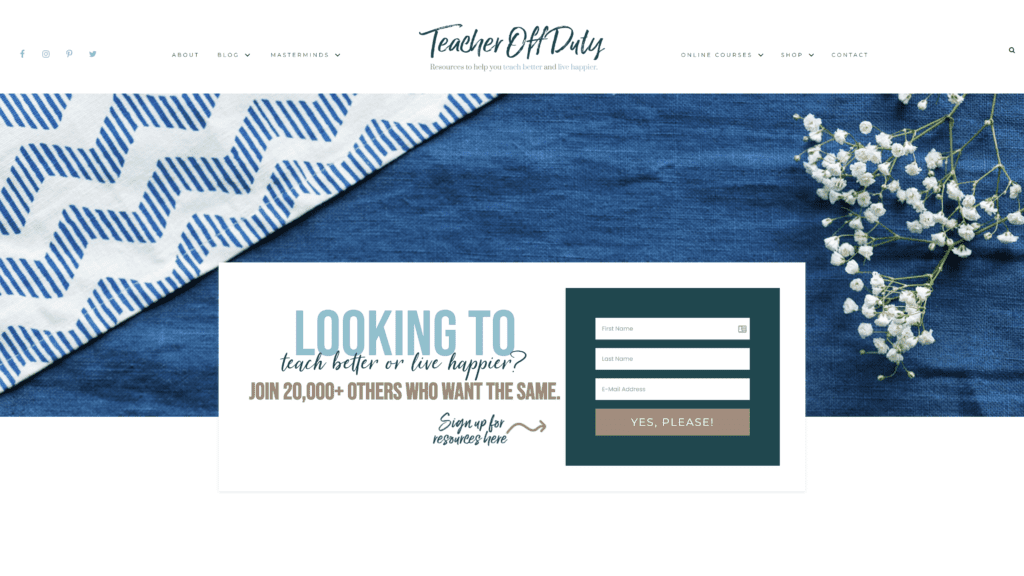
Teacher Off Duty helps teachers give their very best while not sacrificing their personal lives and mental health.
Blogger Jeanne shares resources with lesson ideas, teaching strategies, management, and more.
She has an entire section dedicated to new teachers.
Jeanne teaches courses and a master class.
She also links to her Teachers Pay Teachers store.
Lucky Little Learners
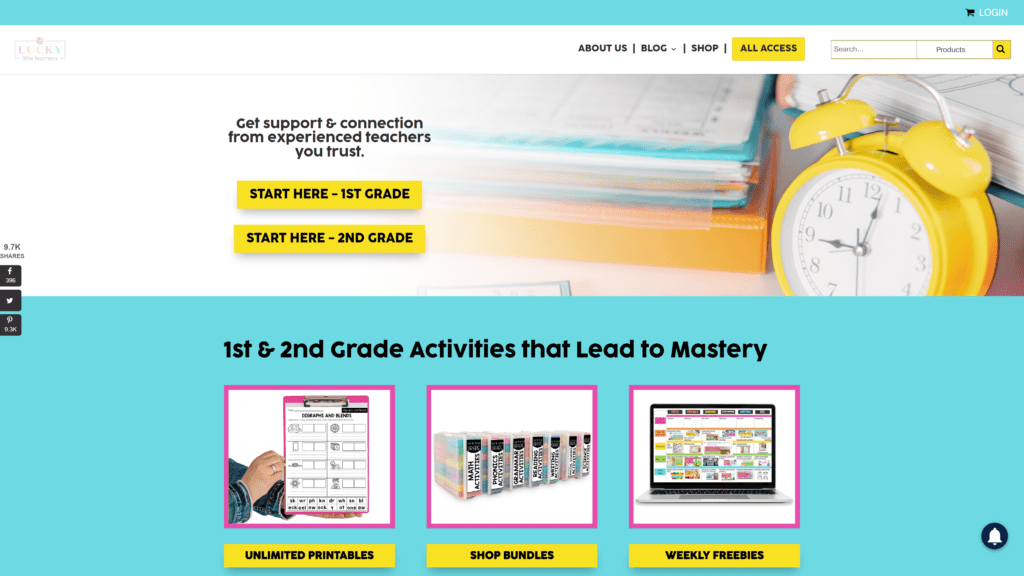
Lucky Little Learners features a curriculum created for first and second grades, along with helpful teaching posts.
New teachers can save a lot of time on planning by using their resources.
Blog owner Angie hires experienced teachers to help write the curriculum.
Angie sells her products individually and in bundles.
Teachers can also get access to all materials with a subscription.
Teacher Blogs for Parents
Teacher blogs give parents education advice.
They help parents augment their children’s learning with at-home activities.
Kid World Citizen
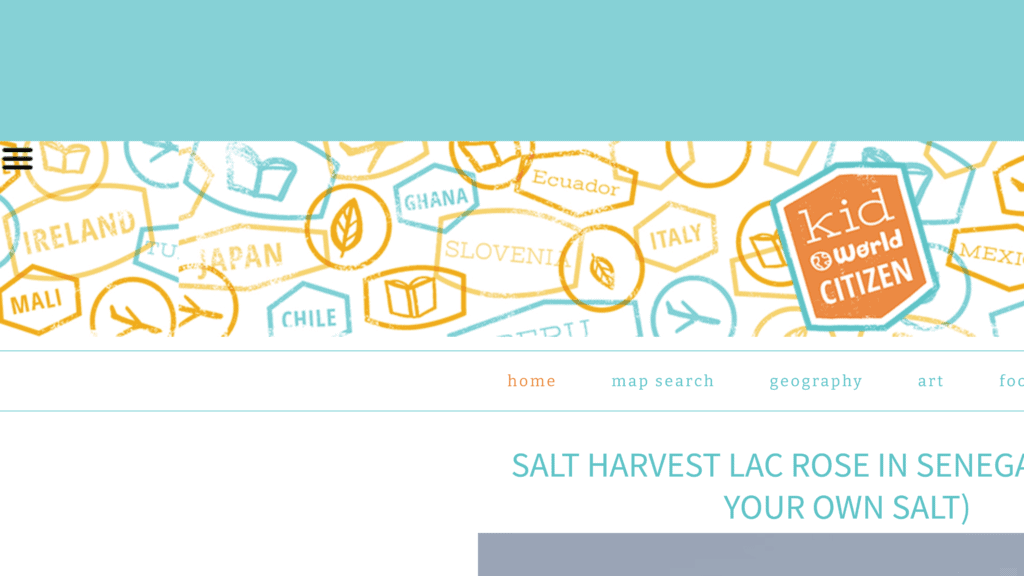
Kid World Citizen helps parents expose their children to other cultures.
The blog has activities, books, food, geography facts, and more.
Blogger Becky is an ESL and Spanish teacher.
She monetizes through affiliate links, ads, and a Teachers pay Teachers store.
Wife Teacher Mommy
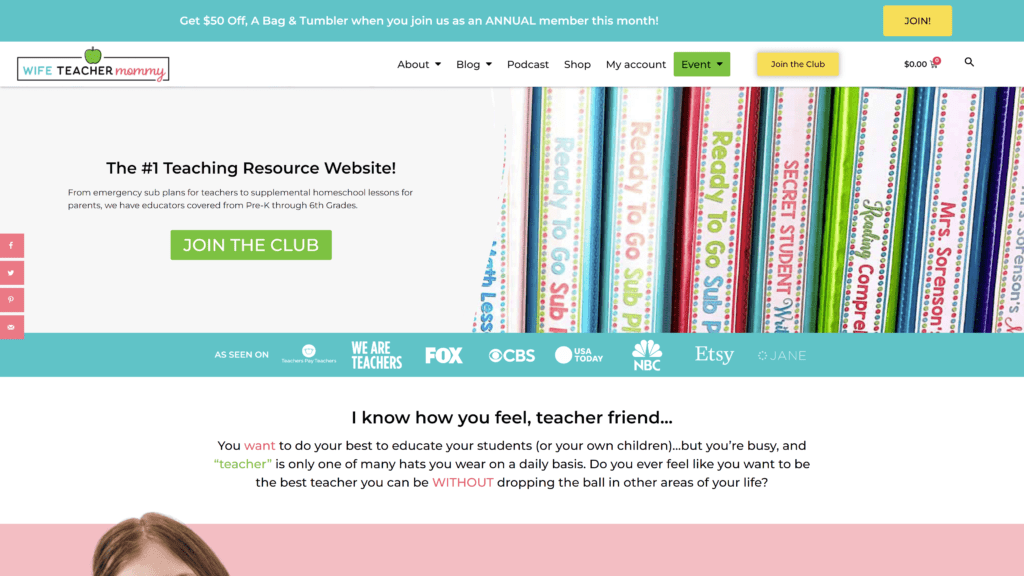
Wife Teacher Mommy is a blog created by Kelsey, a teacher-turned-sub.
While subbing, she realized that teachers need help with sub plans.
Now she provides digital resources for subs and homeschool parents.
Kelsey monetizes her blog by selling her digital resources and hosting a podcast.
She also allows access to all resources through a monthly subscription.
The Homeschool Mom
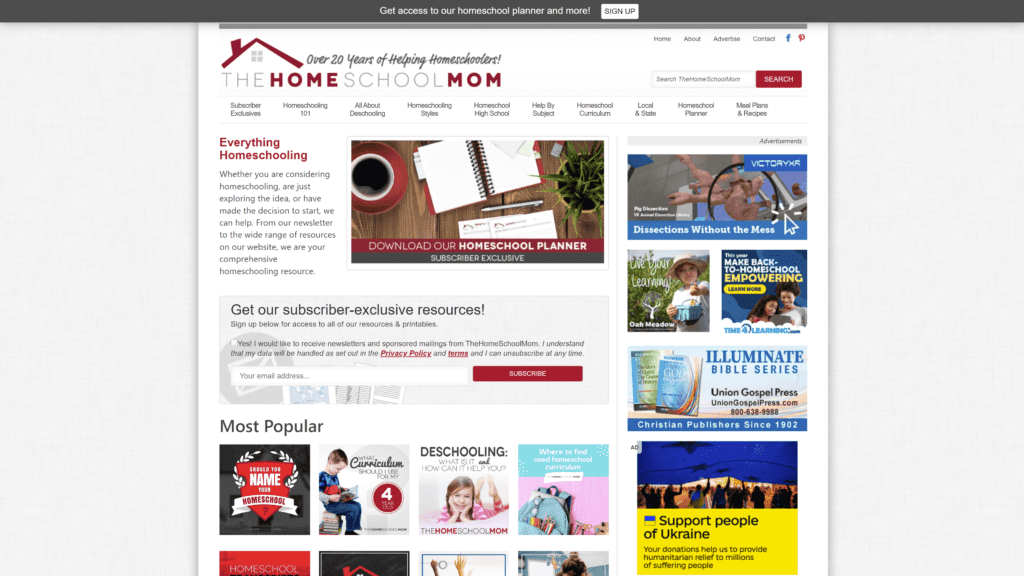
The Homeschool Mom is a site for parents who need advice, help, and resources for homeschooling.
It’s one of the oldest homeschooling blogs online.
There are lesson plans, ideas, and tips for getting set up.
The blog features ads and affiliate links to Amazon and homeschool curricula.
The site also promotes the blog’s YouTube channel.
TheRoomMom
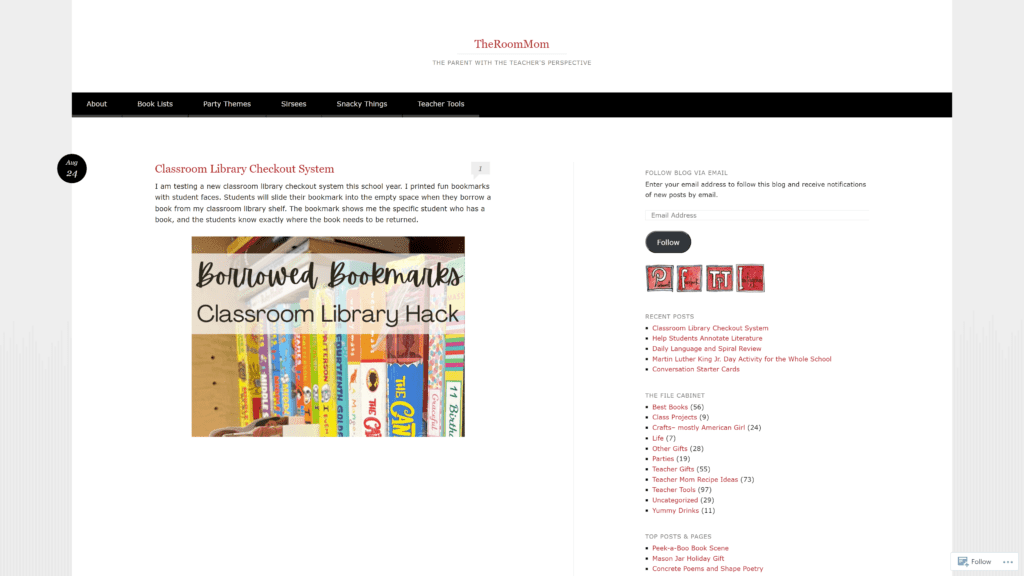
Caitlyn’s blog TheRoomMom’s tagline is “Parenting with a teacher’s perspective.”
It’s full of advice for ways parents can be supportive both inside and outside of the classroom.
She gives advice for class parties, teacher gifts, and more.
TheRoomMom is primarily supported through links to Caitlyn’s Teachers Pay Teachers store.
Boy Mama Teacher Mama
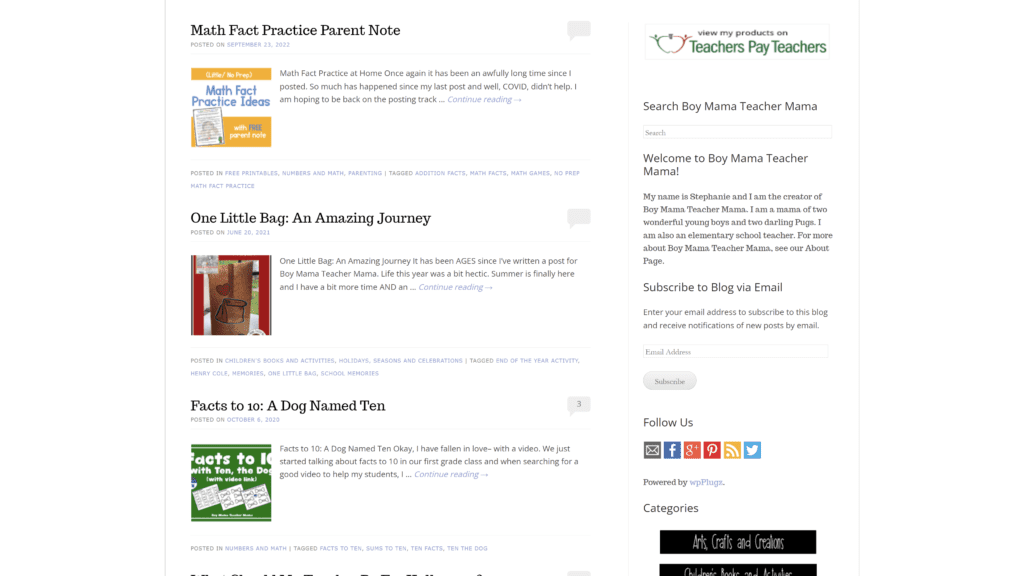
Stephanie, the blogger behind Boy Mama Teacher Mama, is an elementary school teacher and mom of two boys.
Her site is dedicated to helping parents and teachers find activities and advice for educating boys.
Stephanie monetizes her blog through affiliate links.
Teacher Blogs for Inspiration
Inspirational teacher blogs give teachers advice for difficult classroom situations.
They may also be uplifting to help teachers relieve stress from the job.
Laura Randazzo
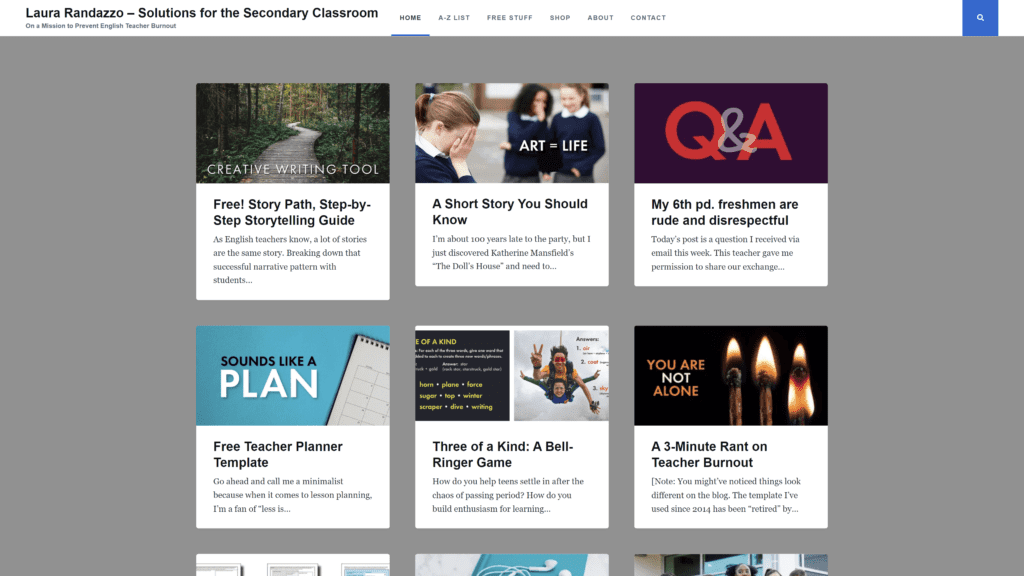
Laura Randazzo’s blog is one of the oldest teacher blogs.
While her blog is geared toward English teachers, it has a little something for almost all teachers, especially those who teach middle and high school.
The blog does contain lesson ideas, but it also has helpful tips for instruction and classroom management.
Randazzo also shares her thoughts on education topics.
The Jose Vilson

Jose may be one of the most inspirational bloggers online.
He’s an educator and activist dedicated to helping all students get quality education, regardless of race.
He also founded the organization EduColor.
Jose uses his blog to promote his books and get speaking engagements.
He also has a shop where he sells funny and inspirational teacher merchandise.
TweenTeacher
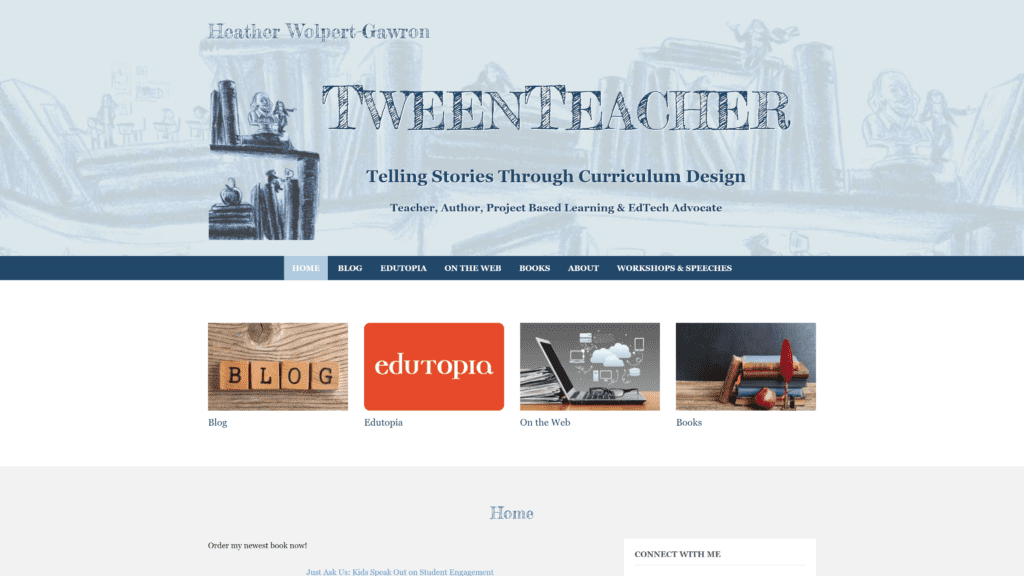
Heather teaches middle school students and understands all of the joys and challenges of this age group.
She gives helpful teaching and classroom tips along with lessons and projects.
Heather uses her blog to promote her books, which readers can buy through her site.
She also promotes herself as a speaker and workshop leader.
Dr. Catlin Tucker
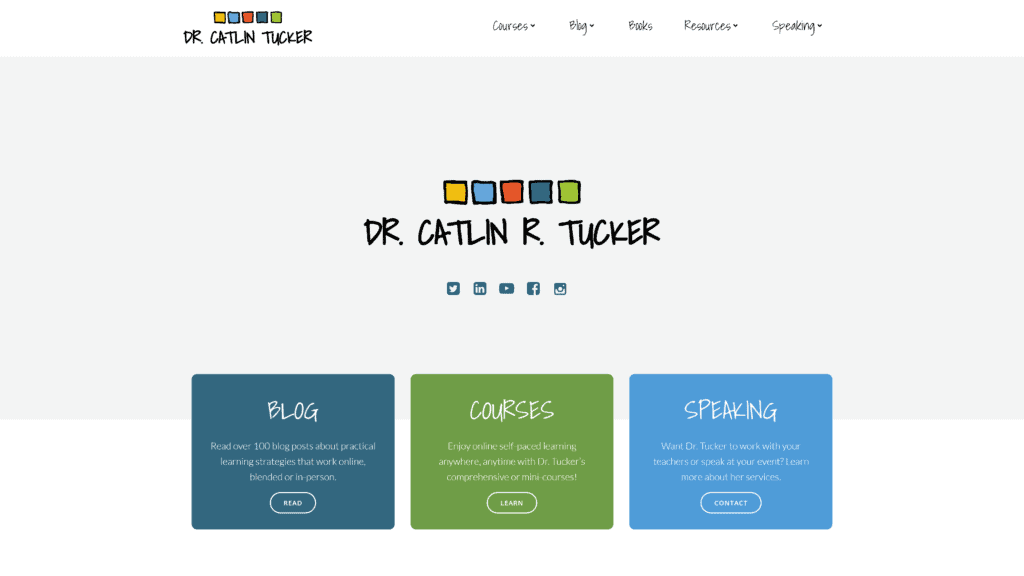
Dr. Catlin Tucker is a teacher, professor, and more.
Her blog helps teachers keep up to date with the latest best practices in education and classroom management.
Catlin uses her blog to promote her online courses, podcast, and e-books.
She also sells merchandise and can be hired for speaking engagements.
Teach 4 the Heart
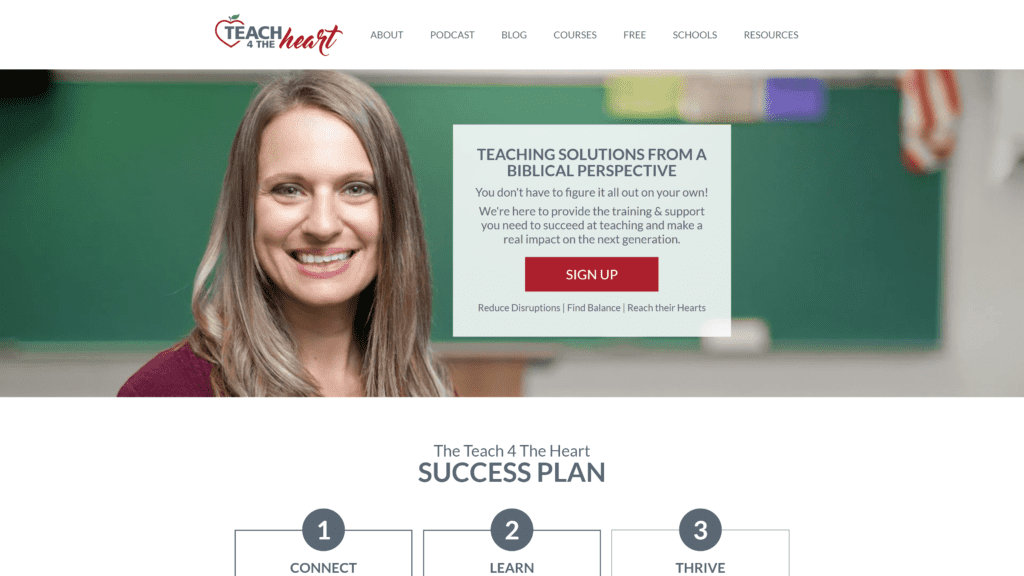
Teach 4 the Heart has a Christian perspective but offers advice for all teachers.
It has posts on classroom management, teacher tips, and encouragement.
Linda monetizes her blog through online courses and conferences, a podcast, and merchandise.
She also works with schools through workshops.
Teacher Blogs for Supplies
Teacher blogs for supplies recommend some of the best supplies and other products on the market for teachers.
The Resourceful Teacher
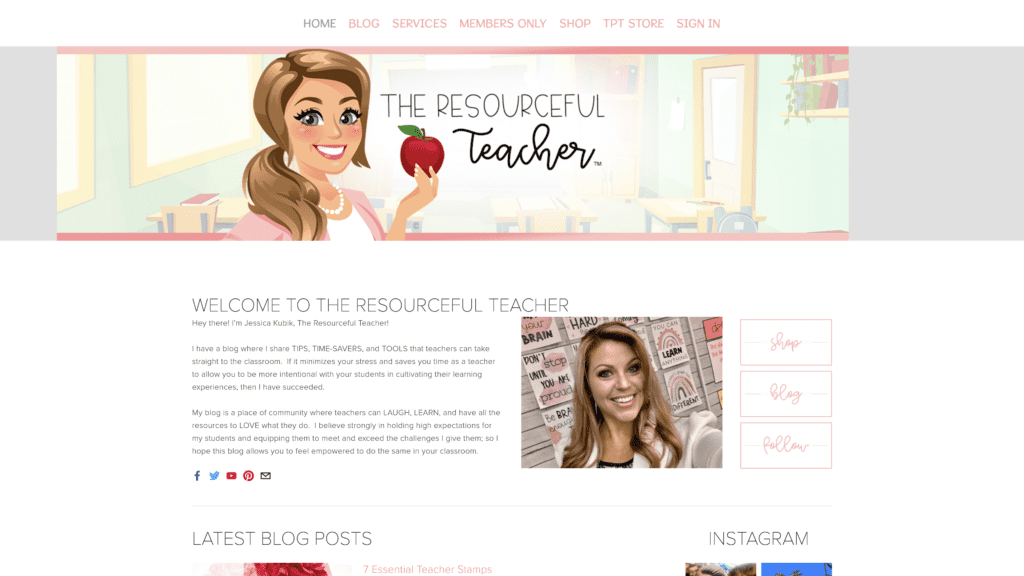
Jessica’s blog suggests some of the best products and timesavers for busy teachers.
She does appealing, eye-catching product reviews that get teachers excited about her new supply finds.
Jessica monetizes her blog through affiliate links.
She also has a “member’s only” section that requires members to share their emails.
She sells curriculum packages to teachers and parents.
She also has a Teachers Pay Teachers store.
Clutter-Free Classroom
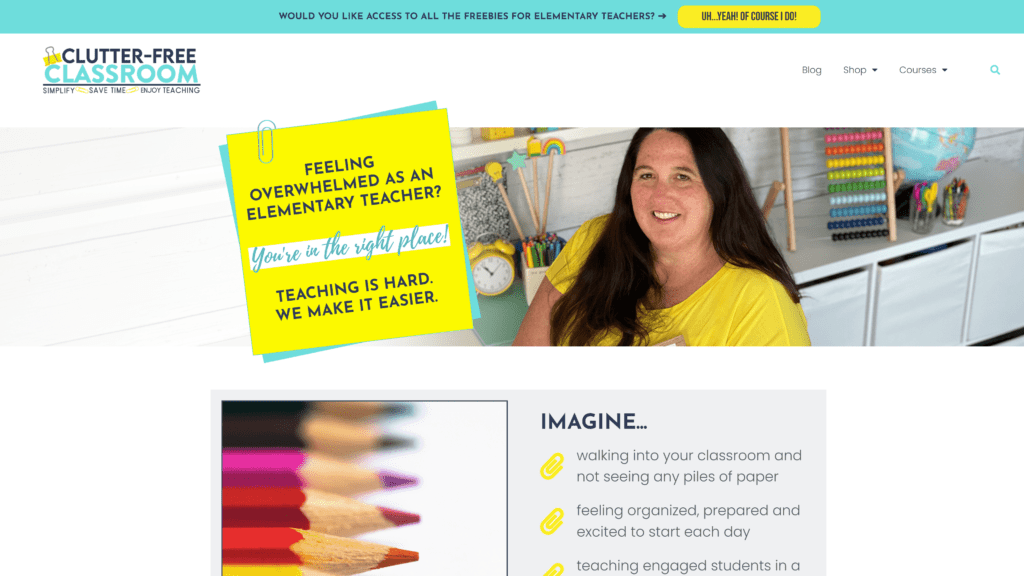
Jodi, who runs Clutter-Free Classroom, helps teachers with classroom design, supplies, and decor.
She creates and recommends products that make teaching easier.
The blog makes money through selling digital products on the site and Teachers Pay Teachers.
Jodi also sells courses and offers full access to her products with a monthly subscription.
The Simply Organized Teacher
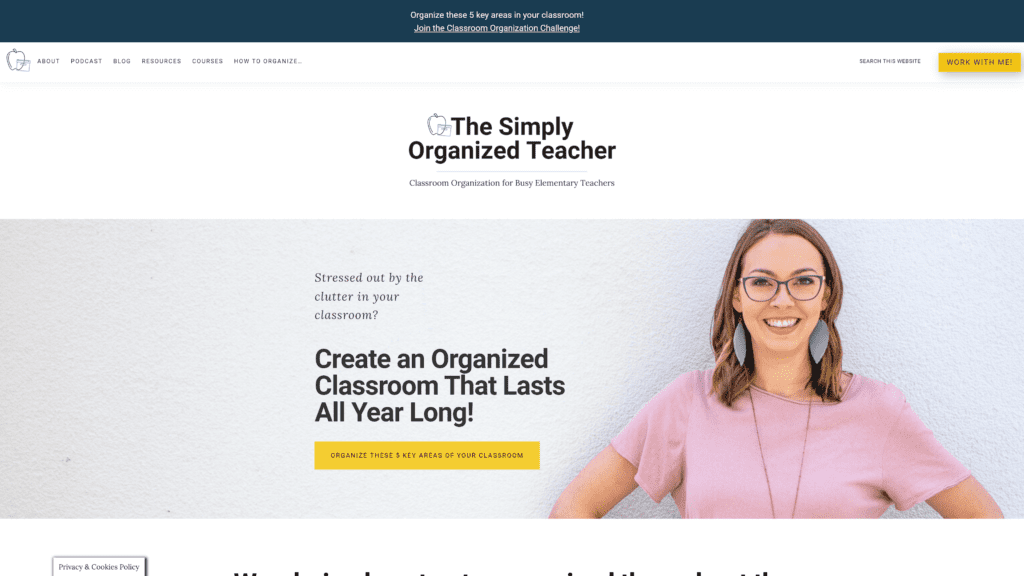
Kelly at the Simply Organized Teacher helps teachers get their classrooms in order so they can focus their energy on teaching.
She recommends products that help with organization.
The blog earns income through affiliate links, digital products, and courses.
Kelly also hosts a podcast and is available for speaking engagements.
Get School Supplies List
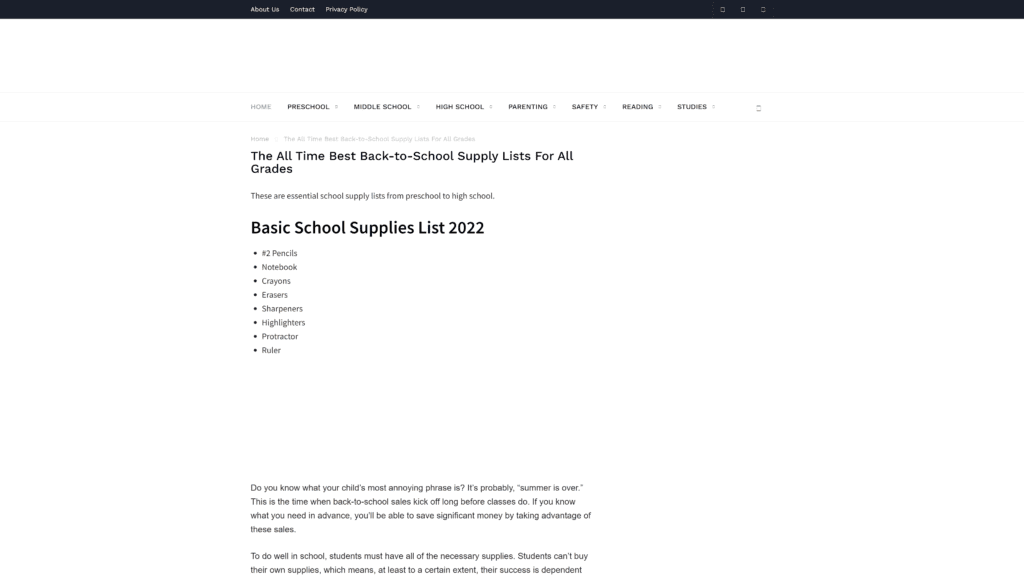
Get School Supplies List is a blog dedicated to helping parents find the supplies they need for a specific grade.
It also advises on the best supplies for any budget.
The blog contains education-related posts.
The blog is primarily monetized through ads.
It also has a few affiliate links for products.
Maneuvering the Middle
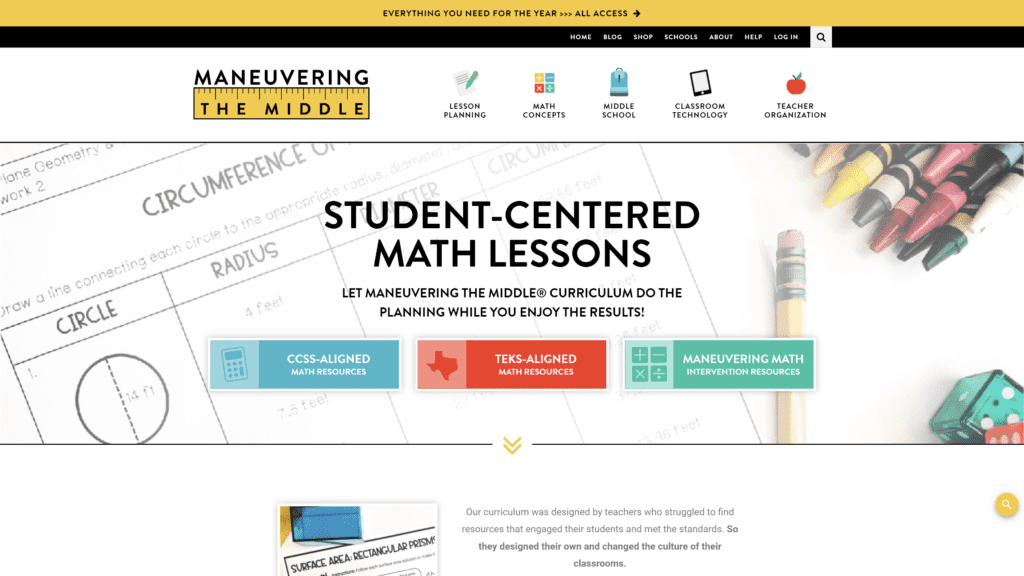
Maneuvering the Middle is a blog dedicated to middle school teaching with a focus on math.
Blogger Noelle shares recommendations for digital products and supplies that middle school teachers will find helpful.
Noelle monetizes her blog through affiliate links and digital curriculum products.
She also sells her curriculum to schools.
Teacher Blogs for Crafts & Lesson Plans
The blogs below have large libraries of crafts and lesson plans.
These sites get a lot of hits as teachers tend to search for lesson plans often.
Teaching With a Mountain View
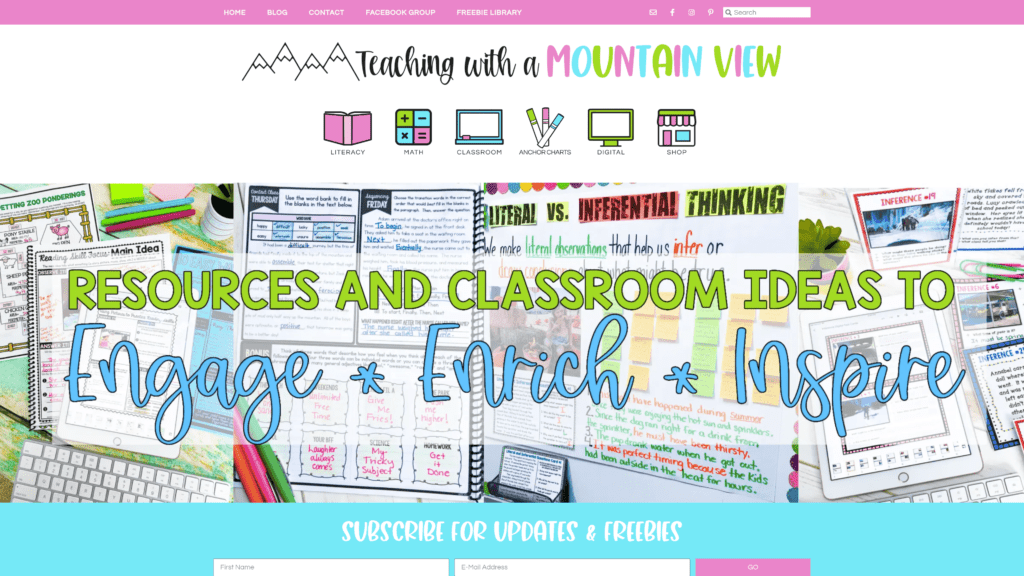
Teaching With a Mountain View supports founder Mary’s Teachers Pay Teachers account.
The site has a vast library of helpful lessons, worksheets, printables, and more.
The blog details how to teach concepts along with using the worksheets.
Links fixed at the top of the page make it easy to find information by category.
What the Teacher Wants
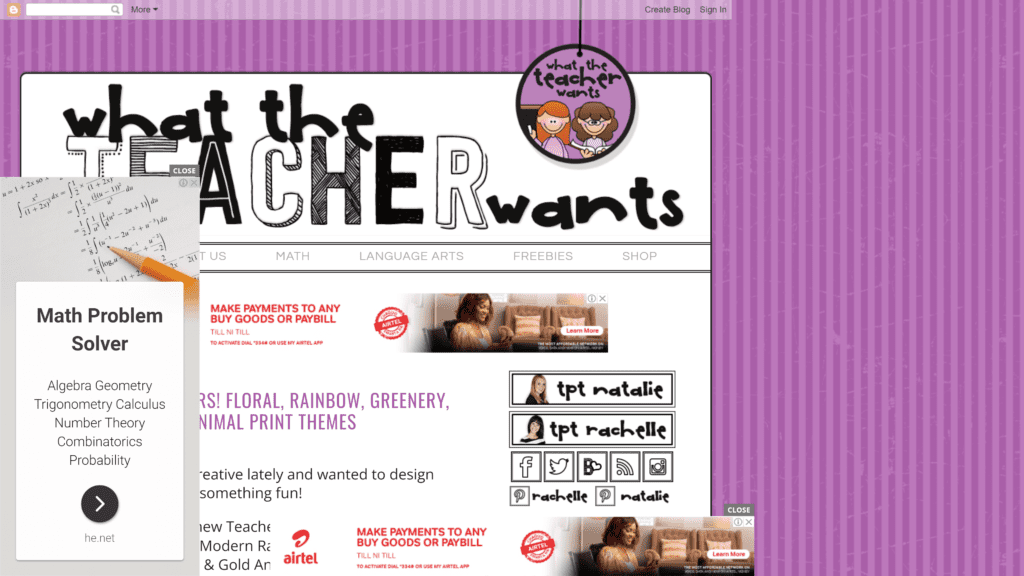
Teacher friends Natalie and Rachelle run What the Teacher Wants.
Their blog primarily promotes their Teachers Pay Teacher stores.
However, they enhance their blog by including detailed instructions for using their products.
They also include authentic photos.
The teachers monetize their blogs through their product offerings and with ads.
Class Tech Tips
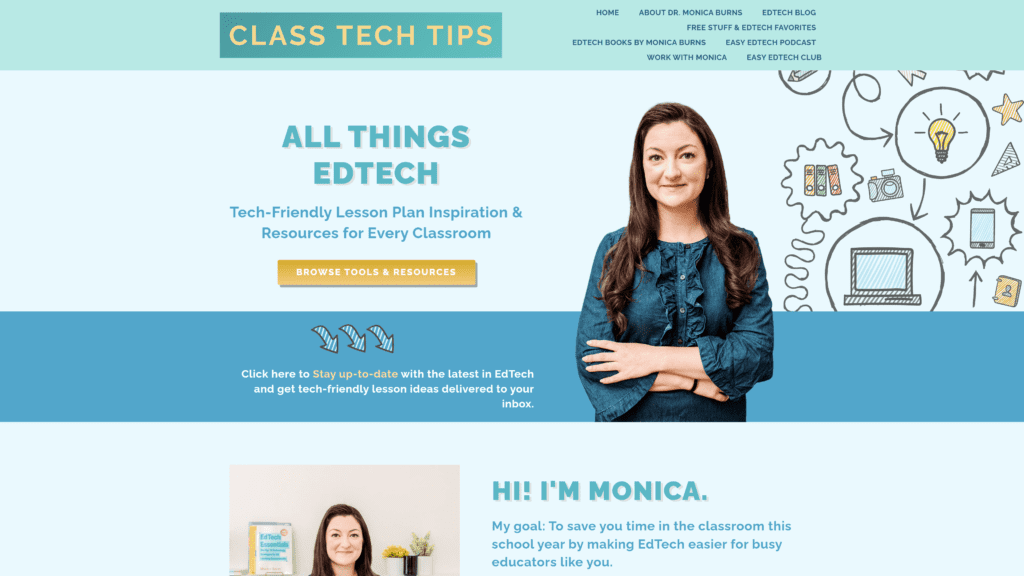
Class Tech Tips has a wealth of resources and tips for teachers who want to incorporate technology in the classroom.
Most blog posts are full of helpful, actionable advice.
There are also freebies.
Monica, the blogger, has done a stellar job monetizing her site.
She uses affiliate links and accepts collaborations and sponsorships with other brands and blogs.
She also promotes her book and podcast.
She has a master class for teachers who want even more help.
The Crafty Classroom
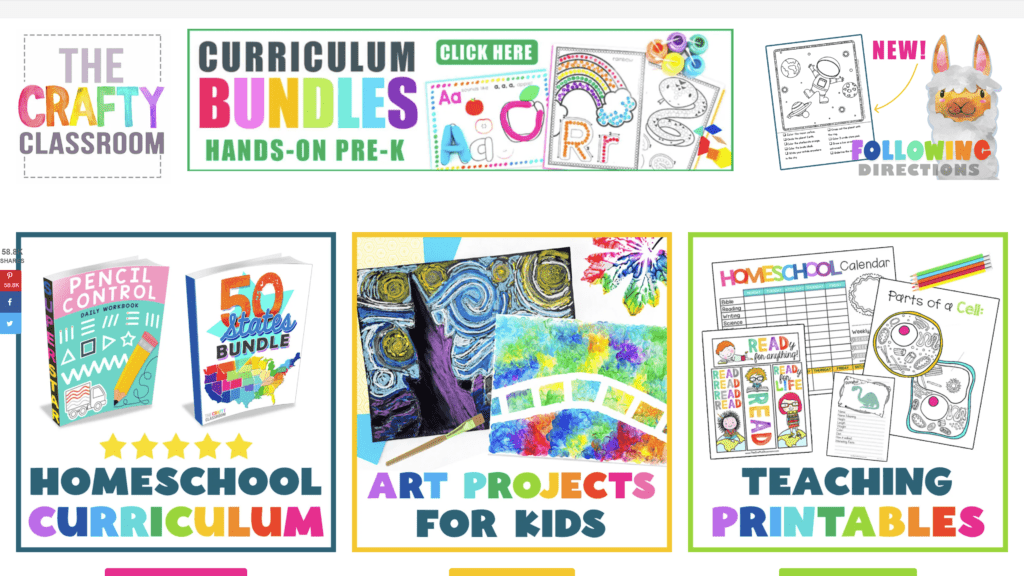
Christian is a homeschooling mom whose blog, The Crafty Classroom has craft and project ideas for almost anything you can imagine.
Her colorful site has lots of images of finished projects and detailed instructions.
Christian monetizes through ads. Her site store contains downloads for projects and entire curriculum bundles.
Teach Junkie
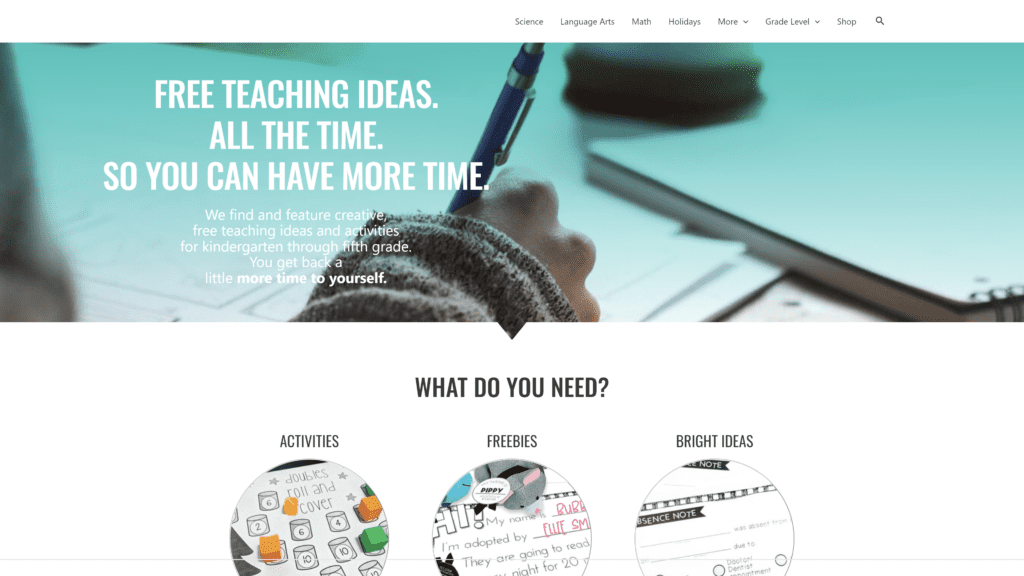
Teach Junkie helps teachers save time and money by finding the best free resources on the internet.
They curate great ideas for K-5 activities and lessons.
They offer lessons, activities, crafts, and more.
The blog is monetized primarily through ads.
It also has a shop where teachers can buy fun printed items like t-shirts, mugs, and masks.
How to Become a Teacher Blogger
Now that you have seen some motivations for starting a blog let’s look at how to start a blog.
1. Determine the Direction of the Blog
You know you want to create a teacher blog – now it’s time to narrow things down.
You can use keyword research to uncover opportunities in the teacher blogging space.
You’ll be able to see what’s in demand and what may be missing from this competitive space.
You should also think about how you plan to monetize.
Consider your skills and what you can sell through your blogs.
While many teacher blogs have ads and affiliate links, almost all of them sell digital products.
2. Select a Niche
The teacher blogging space is wide, so you need to understand how to choose the right niche.
Start with something relatively narrow, but give yourself room to grow.
Try to find a niche that isn’t completely saturated.
Your niche may focus on a particular subject area, grade, or aspect of teaching.
Research to see what the competition looks like.
3. Select a Name
You have many options when coming up with a blog name.
While some bloggers just use their names, many more come up with something education-related.
Teachers often go with something cute or funny or make a pun on a teaching term.
You may want to choose a name that’s related to your niche, but leave it broad enough in case you decide to expand your blog into new topics.
4. Select a Blogging Platform
There are many different blogging platforms available.
Over ⅓ of the websites online use WordPress, making it the most popular choice.
There is a learning curve, but it will give you flexibility and functionality.
Other platforms like Wix and Squarespace are easier to use but don’t have nearly as many customization options.
5. Register a Domain Name
Your domain name is your web address.
It will usually be the same as your blog name.
You’ll need to decide which domain extension you’ll use, such as .com, .org, or .co.
Most bloggers opt for a .com domain.
Once you find the best domain registrar, you’re reading to register your chosen domain name.
6. Get Web Hosting
Web hosting costs can range from a few dollars a month to several hundred or more.
When starting, you won’t need a lot of features like extra bandwidth and storage.
It’s best to start small and increase hosting as your blog grows.
We suggest managed WordPress hosting, as it will work best with the WordPress platform.
You’ll get a one-click WordPress download and more.
7. Build the Blog
Once you have everything set up, it’s time to start building your blog.
While you can hire someone to build it for you, it’s best to build your first blog yourself.
It’s a good idea to know how everything works.
Themes
First, you’ll need to install a WordPress theme.
You can think of a theme as the set of files that house all of the code for your website.
The theme manages the overall format, appearance, and functions of your blog.
Plugins
WordPress plugins add to the functionality of your website.
You can find a plugin to make your website do almost anything you want it to, such as creating an e-commerce store.
Be careful to use only the plugins you need, though.
Too many plugins can slow down your page speed.
Essential Pages
Once you’ve built the foundation, you can add the essential pages for your blog.
While all teacher blogs won’t have the same essential pages, most have at least a few that are the same.
Be sure to include About and Contact pages to establish your credibility and make yourself available to others.
If you plan to blog on different educational topics, you may want a page for each.
Finally, be sure to include a Privacy Notice and Disclaimers, as these are required by law.
8. Produce Content for the Blog
Creating content for your blog is perhaps the most important step.
Your content is what will draw readers to your site.
If you give people the content they’re looking for, then they’ll come back.
They’ll be more likely to make purchases.
9. Launch the Blog Publicly
When it comes to blog posts, the more you have before launch, the better.
You should have at least ten to 15 posts before you go online.
You should then add more posts each week to initiate growth.
Launching a new blog is exciting.
Before launch, go back through your blog to make sure everything is ready.
Ensure that you’re following all SEO best practices.
10. Promote the Blog
Once your blog is online, it’s time to get out there and promote it.
You’ll have to get visitors to your site in the beginning, as it can take a while to start ranking in Google.
Fortunately, there are many ways to promote a blog.
You can promote through social media and by building backlinks.
Guest post on other sites in exchange for backlinks. You can also use paid promotions on social media.
Similar Blogging Types to Check Out
Below are some niches that are similar to teacher blogging.
You can use these for inspiration or even blend some of these ideas into your blog.
1. Art Blogs
Art blogs are usually run by artists.
They often feature the artist’s work or work that inspires them.
Art blogs usually contain project ideas for those who want to learn how to create their artwork.
Art blogs for kids have project ideas and instructions for kids’ artwork.
You may include these types of projects in your teacher blog.
2. Craft Blogs
Craft blogs feature a crafter’s work and have step-by-step instructions on how to make your own.
Teachers make a lot of crafts in the classroom.
Teacher blogs often feature craft ideas for students of all ages.
If you’re skilled with crafting, you can come up with unique ideas for teachers to use in their classrooms.
3. DIY Blogs
DIY blogs also feature step-by-step instructions for various projects.
For a teacher blog, you’ll often describe activities and lesson plans to help other teachers.
You can take some cues from DIY blogs about how detailed you need to be.
Frequently Asked Questions
Do you still have questions about teacher blogs? We have answers!

Can teachers have blogs?
Teachers can absolutely have blogs.
Many teachers use their blogs and digital resources as supplemental income.
Teachers have to be careful about a few gray areas.
First, teachers must be careful not to include any personal information about their students or pictures of their students’ faces.
Teachers should only work on their blogs on their own time.
Working on your blog during school hours is called “double dipping.”
It’s frowned upon and could even result in termination.
Why is blogging good for teachers?
In addition to the financial benefits, blogging is a great way for teachers to share their ideas with a global education community.
Teaching is never done in isolation.
When teachers can teach and learn from one another, all students benefit.
Wrapping Up
Starting a teacher blog is just one more way to grow as an educator.
You’ll get a chance to meet a group of teachers who can help you grow and challenge you.
You can also share your great teaching techniques with the world.







